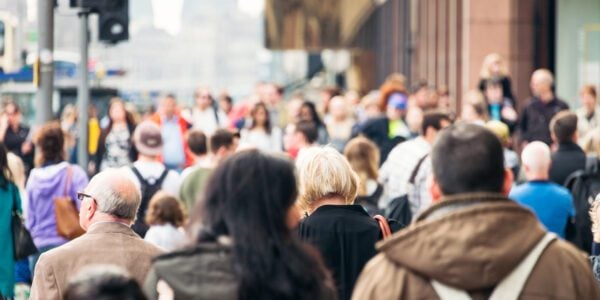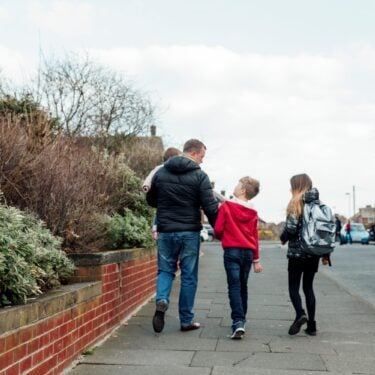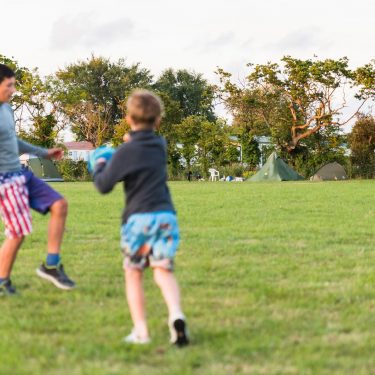
22/02/22
3 min read
A new report from Full Fact, the independent fact checking charity, explores how the online UK information environment can be improved to tackle bad information in the context of the Online Safety Bill and how harmful misinformation can best be addressed under new law and regulation.
Funded by the Nuffield Foundation, Full Fact’s report concludes that the draft Online Safety Bill is a missed opportunity. It sets out ten ways that the Bill can take proportionate and effective measures to address harm, while strengthening freedom of expression.
1. Create stronger media literacy as the first line of defence: build the resilience to misinformation and disinformation of all UK citizens with media and information literacy at the scale needed. Full Fact research shows that one in three adults find it hard to distinguish true information from false information. Ofcom have found that 40% of UK adult internet users do not have the skills to critically assess online content. Just 2% of children have the critical thinking skills to tell fact from fiction online.
2. Prioritise promoting good information over restricting content: restrict information only as a last resort. Freedom of expression includes the freedom to be wrong. An open society should aim to inform people’s decisions, not control them.
3. Make Ofcom responsible for understanding harms caused by misinformation and disinformation: the regulator should fill knowledge gaps with an enhanced research responsibility and an additional evidence centre should be established. To be able to implement and regulate the new Online Safety regime, Ofcom requires the best possible evidence and intelligence, and must be granted a remit to research harms caused by misinformation and disinformation.
4. Actively look for harmful information vacuums and fill them: ensure reliable information from authoritative sources is available. A lack of good, reliable information, made available early, contributed to the spread of 5G conspiracy theories, and false claims about the Covid-19 vaccines.
5. Identify and coordinate responses to information incidents openly: emergency procedures should be open and transparent. The Online Safety Bill is not yet clear enough about how regulators and other services should work together in the face of dangerous information incidents, such as terror attacks, threats to elections, or public health emergencies.
6. Prioritise tackling specific harmful deceptive behaviour over restricting content: amend the draft Online Safety Bill to cover regulated content and activity. Full Fact believes targeting specific behaviour is more likely to produce proportionate responses to harmful false information than seeking to control what content anyone can see and share.
7. Make government interventions in content moderation transparent: limit ‘censorship-by-proxy’ where government pressures internet companies to restrict content that parliament would not. The government can and does seek to limit speech online by lobbying internet companies. The Bill must end unnecessary secrecy in this work, and ensure government attempts to influence online content are made public and accountable.
8. Require independent testing of algorithms which restrict or promote what people can see and share: the Online Safety Bill should grant Ofcom powers and independent researchers access to algorithms. Content moderation algorithms can do real good if they work well, and if they malfunction, they can cause real harm.
9. Secure public confidence in how elections are protected through transparency: the Online Safety Bill must strengthen democracy and a public protocol put in place for elections. Given how vulnerable elections are to interference, we do not believe it is right that the national security and other implications of disinformation campaigns during UK elections are out of the scope of the Online Safety Bill.
10. Continue to ensure the supply of high quality news: the law should require a minimum supply of high quality news on Category 1 internet services. Access to news is part of a healthy society. As where people choose to access news diversifies, the law should require a minimum supply of high quality news, as it does on public service television.
Tackling online misinformation on multiple fronts
Will Moy, chief executive of Full Fact, said:
“In recent years the UK government has adopted censorship through the internet companies without debate and without democratic oversight.”
“Bad information ruins lives. But in an open society there are better ways to tackle it based on making trustworthy information more available and tackling deceptive behaviour.”
“Anyone who cares about addressing harm from online misinformation and protecting freedom of expression should be asking MPs to step in. These are urgent questions that up until now have been delegated to internet companies without scrutiny or transparency.”
Mark Franks, Director of Welfare at the Nuffield Foundation, said:
“Today’s Full Fact report sets out why action is needed on a number of fronts to tackle online misinformation and ensure everyone can access reliable information. While most people do not trust all of what they encounter online, some are much less likely to check the reliability of content than others, leaving some groups more vulnerable to misinformation. Therefore, as part of an effective strategy to tackle misinformation, everybody needs to have good access to information from authoritative sources.
“This report highlights that regulators need the resources and powers to be able to identify in real time where accurate online content is absent or not reaching its intended audiences, and to ensure service providers have plans in place to tackle these information deficits.”
Download the report























































